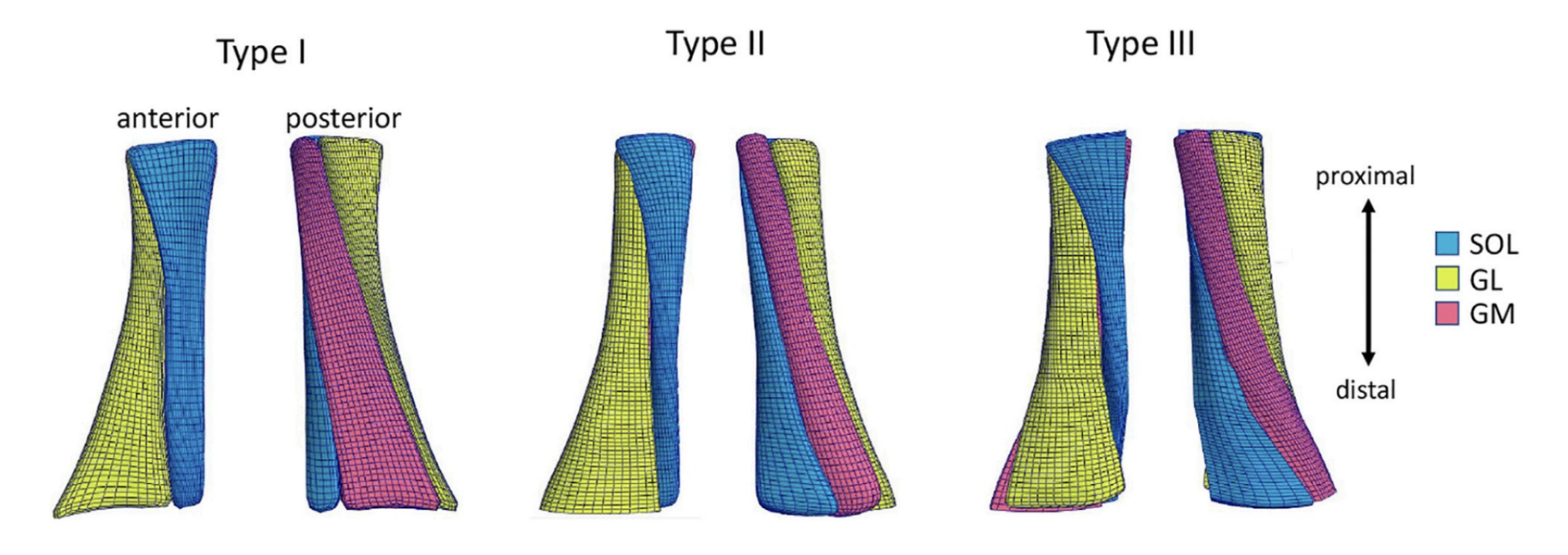Rationale:
The 3D geometry of the Achilles tendon is complex (essentially made up of tendons from the three calf muscles that are twisted together) and influences the strain that occurs in different components of the tendon. This is enabled by sliding that occurs between these subtendons. They can act independently to some extent. This team aimed to develop a mathematical model to test whether the geometry of the Achilles and different rehab exercises influence Achilles strain.What they did..They collected data (joint motion and ground reaction forces) in a single person during walking on heels, walking on toes, 1 leg heel raise (concentric), heel drop with the knee straight and bent (eccentric). They used this and the three common Achilles geometries from another study (see figure) to model strain during these exercises.


